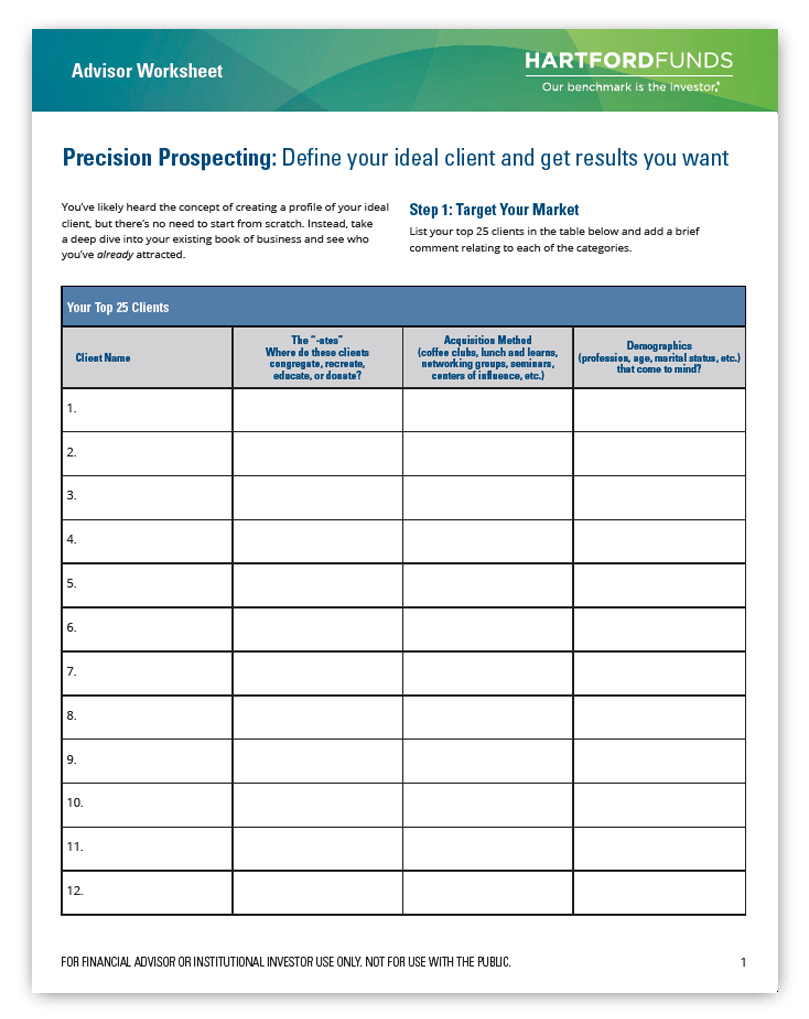When the growth of your business has slowed down, or seemingly stopped altogether, it can be tough to choose a strategy for gaining ground. Ideas for growing your business are always being talked about in the industry, but you only want the one that works—and fast.
The Enduring 80/20 Rule
In a related article, we illustrated how a disproportionate amount of your business (typically 80%) is generated by relatively few of your clients (about 20%). It’s critical that you protect and retain those vital few client relationships by playing defense. But playing defense is only half the strategy.
(If you haven’t done an 80/20 analysis of your business, do that first by going here.)
Knowing the imbalance between relationships and revenue, wouldn’t it make sense to begin replicating those top relationships? You can do that—by playing offense.
Playing Offense: Replicating The Vital Few
Whether you realize it or not, you’ve already succeeded among certain segments of society, as evidenced in your top revenue-generating client relationships. You can deepen and multiply your existing relationships using this logical, straightforward strategy.

Recognize Your Ideal Client Or Prospect
First we’ll highlight your biggest and best relationships to see who you've already attracted. Then we’ll connect the dots to develop a profile of your ideal client.
Find Commonalities Among Your Top Clients
Our worksheet, Precision Prospecting: Define your ideal client and get results you want (download below), makes creating your ideal client profile easy.
Client Name
Fill in the names of your top 25 clients on the worksheet. Then make note of the distinguishing characteristics described in the column headings.The Four "-Ates"
Begin characterizing your target market, as well as the things that matter to them, in terms of "-ates.”- Educate—Where did they go after high school: college, vocational school, armed services?
- Recreate—What do they like to do?
- Congregate—Where do they socialize?
- Donate—Where do they donate their time, talent, or money?
Acquisition Method
Write down how or where you met these clients. Some examples are:- Coffee clubs
- Lunch and learns
- Networking groups
- Seminars
- Centers of influence, etc.
Demographics
Think about certain demographic traits and write them down. They might include:- Profession or employment status
- Age
- Marital status
Who’s Your Ideal Client?
Here are examples of client profiles that might emerge from your list:- Single, widowed, or divorced women
- Business owners
- Pre-Retirees
Does Your Marketing Speak To Your Ideal Client?
Do you promote the expertise that makes you a good match for your ideal client prospects? Also, are your existing clients who fall in the middle or lower range aware of all you have to offer, or using the full range of services that are relevant to them and their needs?
Think about topics that are relevant to this audience. What kind of information and services do they need now? What might they need in the future? Position yourself as the go-to professional for a particular type of client you’ve already served well. We have client-facing material to help facilitate those conversations.
Next Steps
| 1 | Download the Precision Prospecting professional worksheet below |
| 2 | Fill in the grid to identify commonalities among your top clients and create your ideal client profile |
| 3 | Tailor your marketing message to your ideal clients and prospects |






